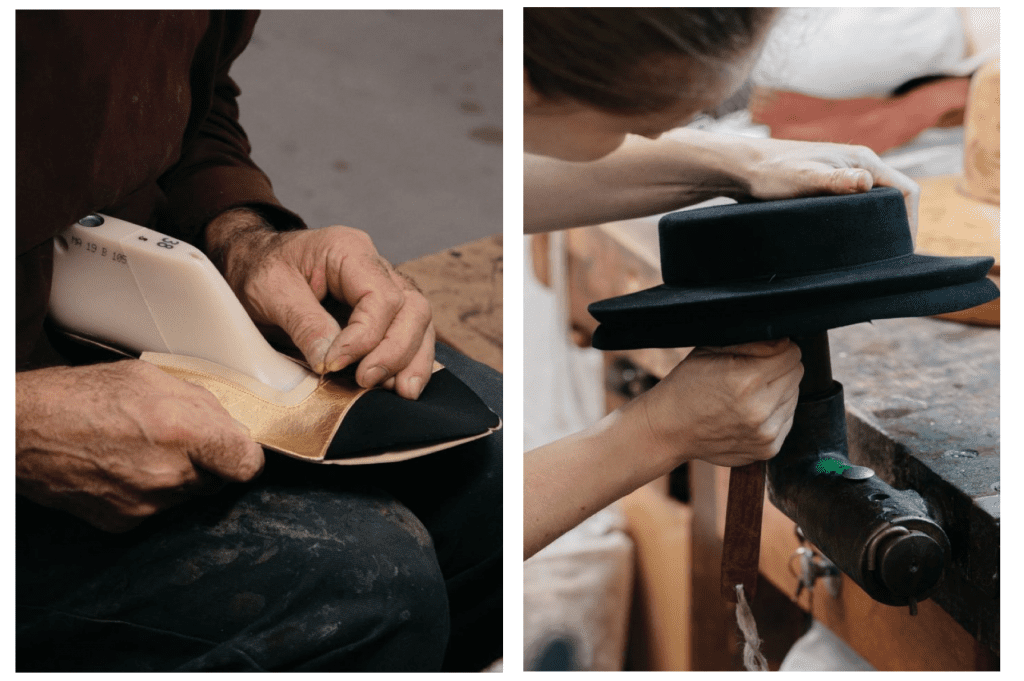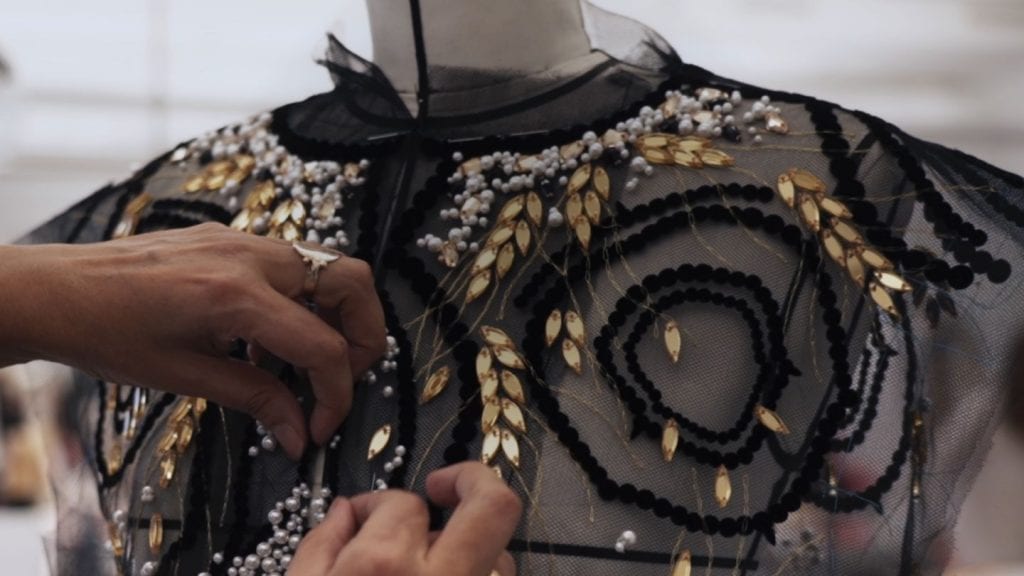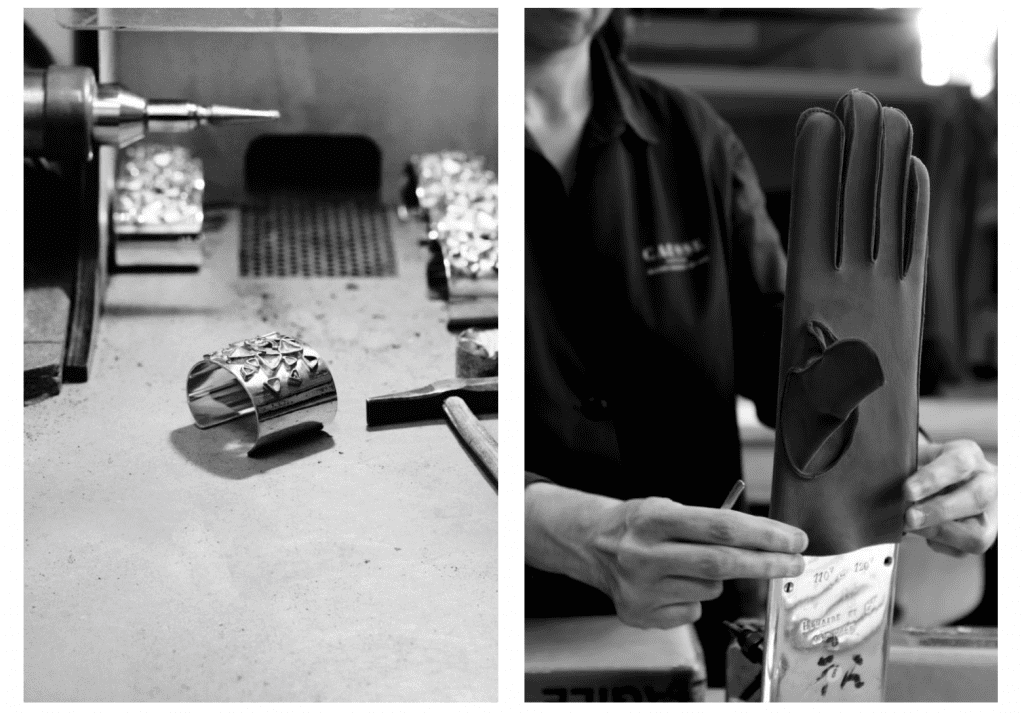Each December since 2002, Chanel has unveiled a collection dedicated to its Fashion Métiers d’art. According to Chanel, these annual collections – which got their start under the watch of the stalwart luxury brand’s late creative director Karl Lagerfeld, with Mr. Lagerfeld’s successor Virginie Viard “serving as the main liaison between the design studio and the specialty workshops for the last few decades,” per WWD – “highlight the creative dialogue” between Chanel and its “Maisons d’art, enhancing the creations of the House,” taking the form of a “Ready-to-Wear collection specific to CHANEL,” and more often than not, being unveiled on location, in over-the-top runway shows in Dallas, Texas, Salzburg, and Rome, as well as Hamburg, Mumbai, and Edinburgh.
At the heart of these offerings is the work of about a dozen different artisans – from “paruriers from Desrues, feathermakers from Lemarié, milliners from Maison Michel, and embroiderers from Lesage and Atelier Montex” to “shoemakers from Massaro, goldsmiths from Goossens, glovemakers from Causse Gantier and pleaters from Lognon, in Paris and in France.” These artisans – which, as of this year, reside under the roof of 19M, “a 275,000-square-foot building in Aubervilliers, north of Paris” – are highlighted below …
Barrie Knitwear: The Scottish knitwear house was founded more than 140 years ago and initially produced sweaters for the British army during the two world wars, before going on to become a favorite supplier to the biggest names in couture in the 1950’s and 1960’s.

Desrues: The 100+ year-old fine jewelry maker and accessory producer has been under the Chanel umbrella since 1985. Since then, Karl Lagerfeld and around 100 employees have worked to maintain the high level of craftsmanship and artistry established by Desrues. The result is an estimated daily output of 4,000 buttons and eight annual jewelry collections, each made up of 100 finely crafted pieces.
Goossens: The celebrated jeweler and goldsmith began working with Coco Chanel in the 1950’s when she selected the maison to be Chanel’s official supplier. As one of the greatest jewelers and goldsmiths in Paris, Robert Goossens – the company’s founder – created pieces in silver and gold-plated bronze, featuring semi-precious stones, quartz and cultured pearls for the French house. Today, the maison is under the direction of Patrick Goossens, son of Goossens’ founder and has been one of the 11 ateliers of Chanel’s Métiers d’Art since 2005.
Guillet: A master corsage-maker since 1896, Guillet re-imagines daisies, forget-me-nots, jasmine, roses, lilies of the valley and gerberas as hairpieces, tiaras and crowns for the industry’s most prominent couture houses, including Chanel.

Lemarié: Chanel has been working with this famed feather-maker since Coco Chanel was at the helm of the house and added the now-iconic flowers to Chanel’s portfolio. It was not long after the two parties began collaborating that Coco Chanel sent Lemarié an order to create a fabric camellia for a collection and the rest, as they say, is history. Today, the camellia with its 16-petal design is widely recognized as the floral symbol of the Chanel house and continues to be invented and reinvented by Lemarié’s craftsmen.
Lognon: Specializing in fabric pleating since 1945, Lognon has a unique expertise that combines hand-crafting with work in cardboard and steam-setting to create perfect pleats. Directed by Gerard Lognon for the past 68+ years, the French company joined Chanel’s Métiers d’Art in 2013 in “a natural collaborative step for both houses.”
Massaro: A bootmaker launched in 1894, Massaro is credited with creating the very first beige and black captoe Chanel shoe, which become a Chanel signature and larger sartorial classic. Per Vogue, “While fashions of the time had women walking in vertiginous stiletto heels, Massaro and Chanel broke with convention, offering soft beige leather shoe with a 6cm heel that gave wearers unprecedented elegance coupled with freedom of movement.” In 2002, Massaro joined the Métiers d’Art family and as such, continues to create everything from classic heels to statement-making PVC shoes, cork-soled sandals and thigh-high boots.

Maison Michel: First established in 1936, Maison Michel rose to success in the 1970’s, when milliners Pierre and Claudine Debard took the helm. Designers of hats and other hair accessories, they sparked a whole new generation of milliners who went on to work for Dior, Givenchy, Yves Saint Laurent and later, Chanel. In 1997, Maison Michel became one of Chanel’s first Métiers d’Art subsidiaries.
Montex: A specialist in tambour or Lunéville beading – a technique in which a hooked needle is used to thread beads, galons, sequins and other materials onto single chain stitches after fabric has been pre-pierced with a cornely – Montex was founded in 1939 and serves as a partner for major couture houses, including Chanel.
*This article has been updated to reflect the death of Karl Lagerfeld and the appointment of his successor Virginie Viard, as well as the construction of a space specifically dedicated to housing the workshops of Chanel’s artisans.











